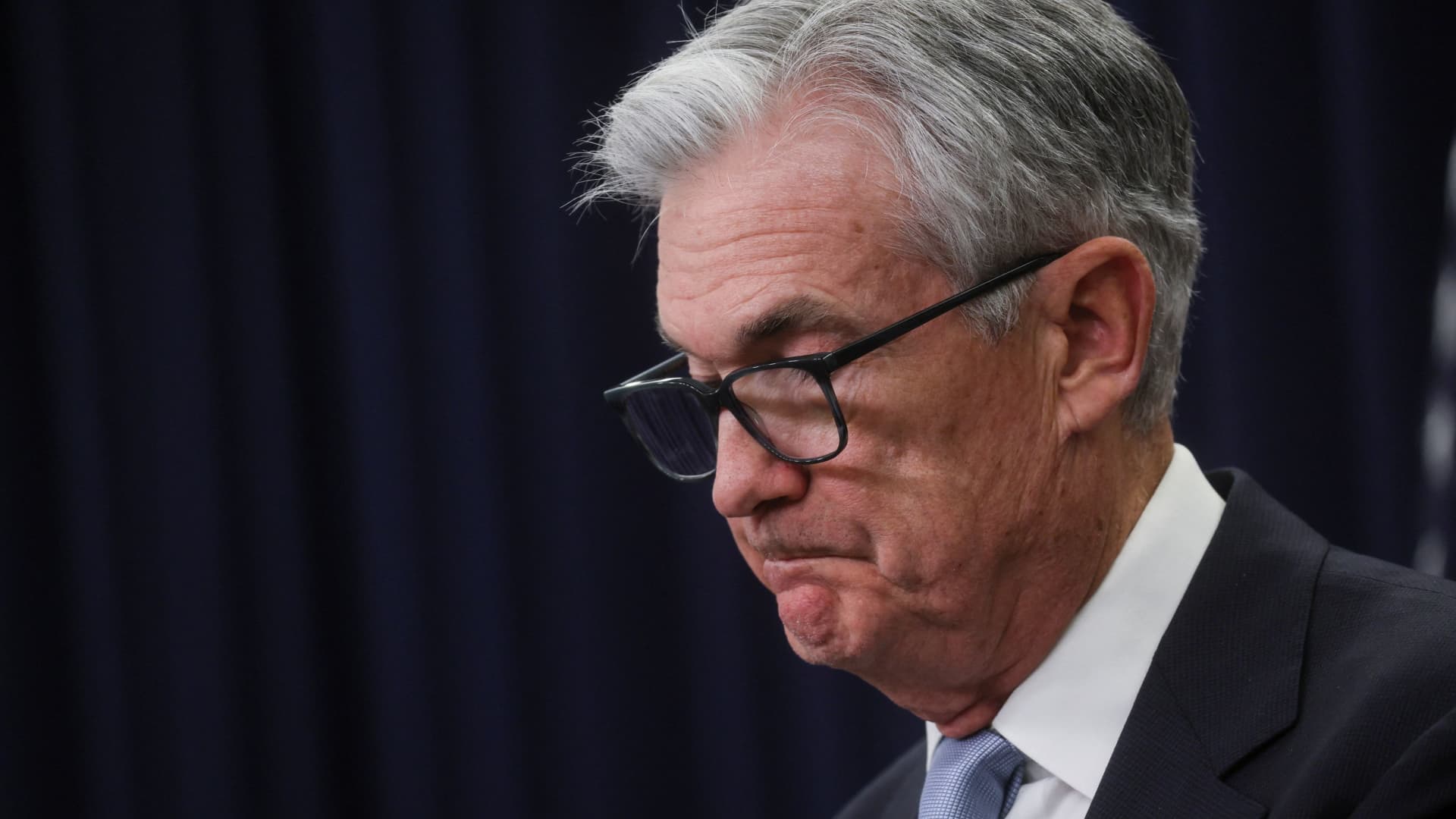Back in the mid-1970s, Toyota’s slogan was, “You asked for it, you got it.”
That might be a good slogan for the Federal Reserve today as it appears the Fed asked for, if not engineered, a recession and is about to get it.
related investing news
With signs the labor market is weakening, service sector activity slowing and consumer spending softening, the economy is teetering on the brink of recession almost exactly six months after the yield curve first inverted.
Job openings, jobless claims and the number of private payroll jobs added in February all were shy of Wall Street expectations.
Layoffs are rising quickly and no longer just at technology and media companies.
CNBC.com’s Jeff Cox recently noted that announced layoffs are 396% above year-ago levels.
Anecdotal information is backing up the statistical data that has been hinting at a loosening of a once-tight labor market that the Fed feared would lead to, if not a wage/price spiral, then what economist Jason Furman has described as “wage/price persistence.”
McDonald’s is paring back, closing its main office for a few days while it delivers pink slips to hundreds of corporate workers. Interestingly, McDonald’s notes the layoffs have nothing to do with rising minimum wages.
Walmart is eliminating 2,000 warehouse workers and reportedly looking to automation to enhance efficiency as fewer human hands are needed to keep business humming, albeit at a slower pace.
Meanwhile, Costco reported its first same store sales drop in three years last month while the size of the average sale fell 5.8%, suggesting that consumers have finally drawn down excess pandemic-related savings.
Consumer spending accounts for nearly 70% of GDP in the U.S., further underscoring the economy’s vulnerability, if Costco’s numbers are a harbinger of further revenge spending weakness to come.
The St. Louis Fed notes that credit card delinquencies at small-to-mid-sized banks are rising, often a precursor to a pullback.
Rising interest rates are still hurting housing affordability and still putting upward pressure on the cost of buying or leasing a car, constraining activity in two vital sectors of the economy.
That age-old indicator of impending recession, an inverted yield curve, occurring when short-term interest rates rise above those of long-term rates, has been flashing a warning signal about a coming recession since November.
The spread between the 3-month Treasury bill and 10-year Treasury note is nearly 154 basis points, more than one-and-a half percentage points, the widest such gulf since the early 1980s, maybe even more so now than then.
From the start of an inversion, the earliest the economy slips into recession is six months hence. That means May could usher the second notable downturn since the pandemic-induced recession of 2020.
Growth forecasts have been slipping of late, with manufacturing and service sector activity already in recession, or slowing down. The Atlanta Fed’s GDPNow indicator has been revised sharply lower to show growth may have decelerated to only 1.5% in the first quarter after initial estimates suggested growth around 3.5% just a few short weeks ago.
More broadly, the International Monetary Fund reduced its estimate of global growth to under 3% for 2023.
Even China’s much anticipated rebound is not materializing as quickly as hoped.
Manufacturing activity in China slowed to a near contractionary pace in March as global demand is not supporting the end of Beijing’s “zero Covid” rollback.
The rapid pace of expected deceleration pushes forward the risk of recession as noted by the rapid drop in bond yields, not just at home, but also abroad, clearly shifting the global bond market’s worry from inflation to recession.
An inverted yield curve, as has been noted here many times in recent months, has correctly predicted the onset of each recession that has occurred since 1968, with varying lead times, ranging from six to 15 months.
Given the rapid pace of interest rates hikes, the fastest since the late 1970s and early 1980s, and given the much speedier impact on both the financial and real economy, recession may arrive sooner rather than later.
So much for the “no landing” crowd.
I have argued that, as the central aim of the Fed’s inflation fight, a recession may well be a feature, rather than a bug, of current monetary policy.
To the Fed, a retrospective warning from 1970s Toyota … “you asked for it, you got it.”
— Ron Insana is a CNBC contributor and a senior advisor at Schroders.


